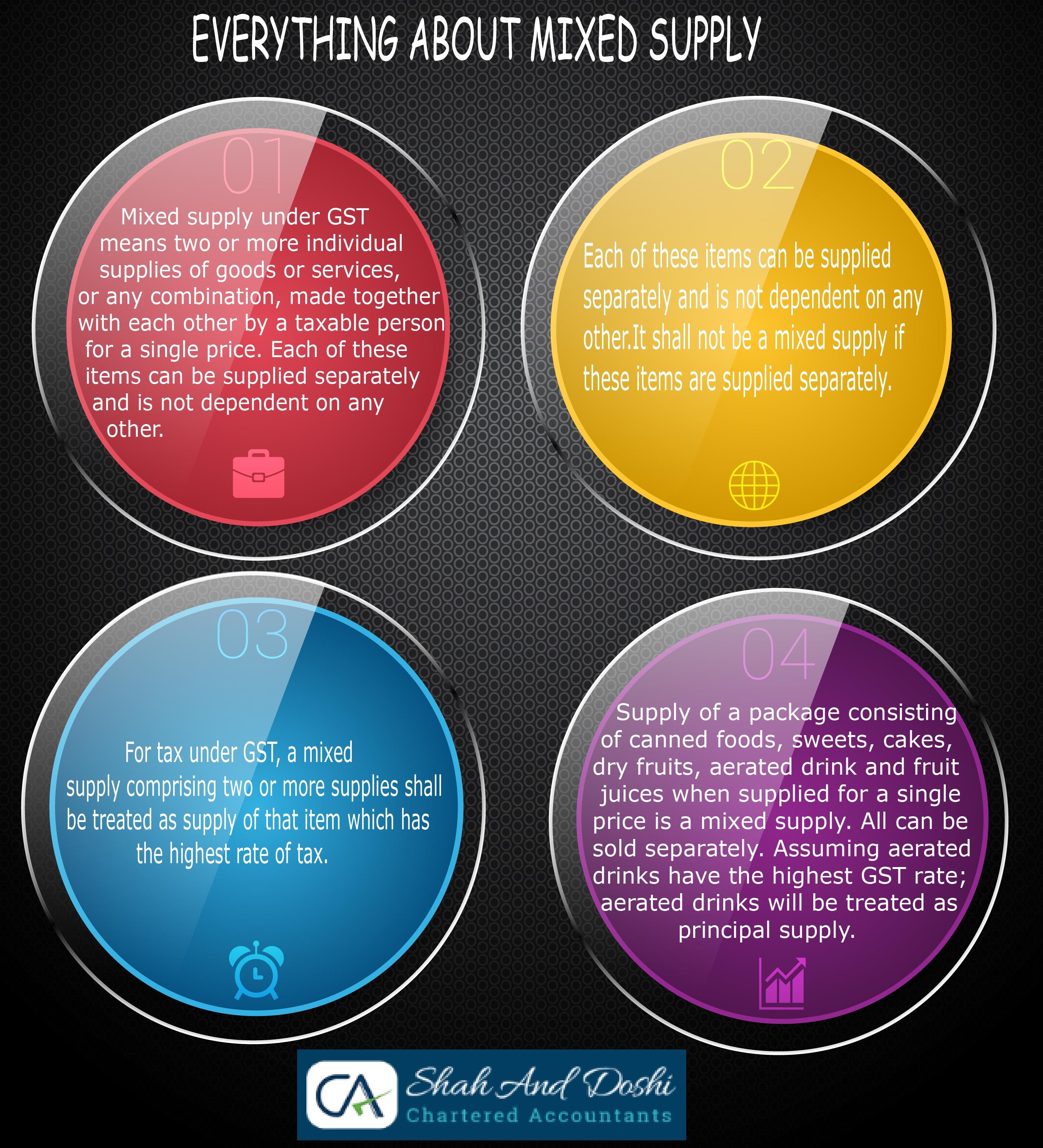Mixed Supply Under GST
Mixed supply under GST means two or more individual supplies of goods or services, or any combination, made in conjunction with each other by a taxable person for a single price, where this supply does not constitute for a composite supply. Each of these items can be supplied separately and is not dependent on any other.
Each commodity has an individual identity and can be supplied separately, they are deliberately supplied conjointly for a single consolidated price, such supply would be treated as a mixed supply.
For tax under GST, a mixed supply comprising two or more supplies shall be treated as a supply of that item which has the highest rate of tax.
The following indicators suggest a transaction is a mixed supply:
- Separate pricing where separate prices on different components of the supply are listed out.
- The individual components are not integral to each other.
- There is a time differential between parts of the supply.
- A single price is charged for separate principal supplies.
- The components are available separately.
The components are not interdependent or connected.
These are not exhaustive or conclusive proof of a mixed supply but if the transaction has more of these indicators, it is likely that it is a mixed supply.
For example;
- A supply of a package consisting of canned foods, sweets, chocolates, cakes, dry fruits, aerated drink, and fruit juices when supplied for a single price is a mixed supply. All can be sold separately. Assuming aerated drinks have the highest GST rate; aerated drinks will be treated as principal supply.
- A car repair workshop supplies both repair services and car batteries to its customers. When it charges a customer for the supply of repair services and a car battery at a single inclusive price, it is then making a mixed supply.
- Services like Lecturing in a coaching center and monthly excursions such as trekking, etc. The two services are not naturally bundled in the ordinary course of business. Therefore, it is a mixed supply.


